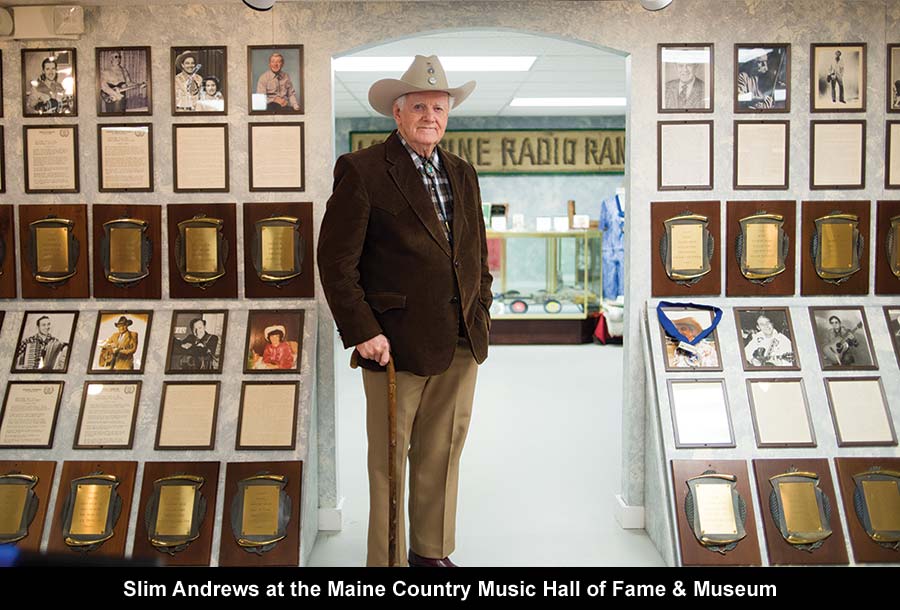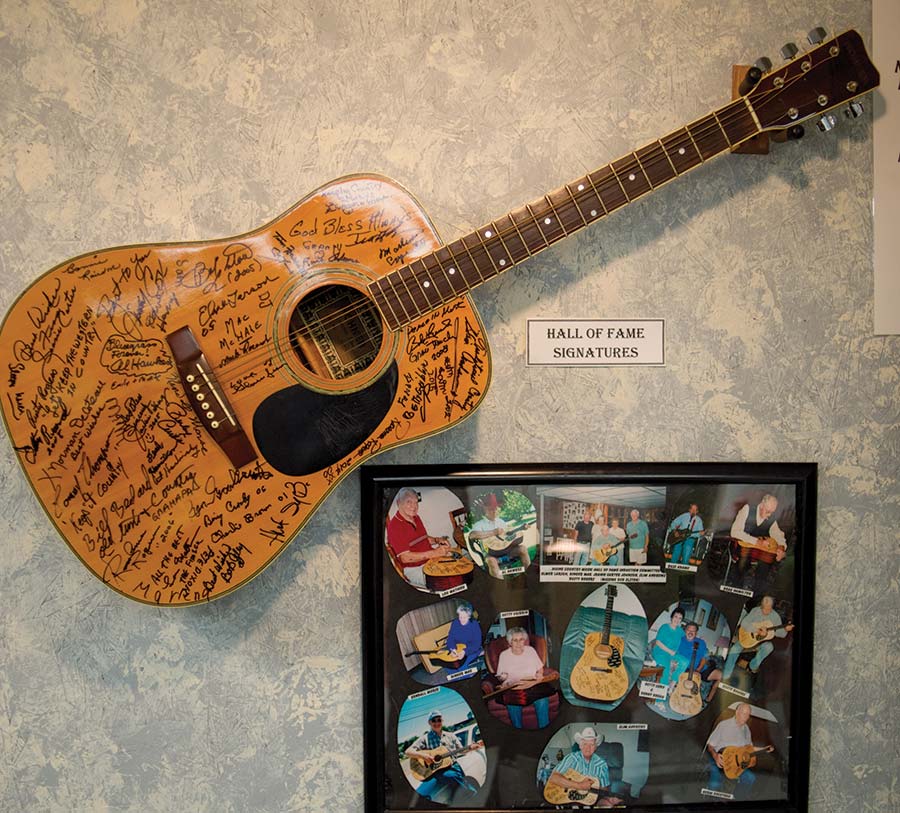Home of the Music Legends
By Toby Haber-Giasson | Photography by Lauryn Hottinger
Come take a custom tour of the Maine Country Music Hall of Fame (MCMHOF) with the legendary Slim Andrews. Slim has known every one of the 123 award winners in the Hall of Fame personally, and has a story about every single piece of memorabilia on display.
But you’re thinking, “Is Slim Andrews his real name?”
“I got into country in 1952, when I come home from the service,” Slim says. “Leonard Huntington was not a good name for country music, so I made one up.” He flashes a smile, “Conway Twitty did it– so why not me?”
Now you’re thinking, “What was Twitty’s real name?”
Andrews, Chairman of the Award Induction Committee, used to be the Chairman of the Board but he gave it up. “I’m getting old- I’m 85.”
The new chair is Ken Brooks, who gigs with his wife Jane, and also with the Katahdin Valley Boys Bluegrass Band. It seems like almost everyone involved in the Hall Of Fame is a performer himself.
Nominations can be brought by any member of the five Maine country and bluegrass associations:
- Maine Country Music Association
- Pine Tree Country Music Association, which sponsors the Maine Old Opry in the southwest corner of the state
- Downeast Country Music Association, dedicated to country, gospel, folk and bluegrass
- Bluegrass Music Association of Maine
- Maine Academy of Country Music, which bestows the posthumous Hillbilly Heaven awards.
Cracks Slim, “I’m in no hurry to win that one.”
On display
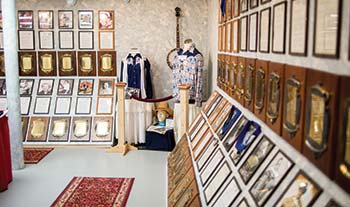 The Hall of Fame is housed in a section of The Silver Spur, a honky tonk dance club on Route 11 in Mechanic Falls. The Hall itself features 123 awards, with letters and photos featuring each inductee. Since its inception in 1978, the MCMHOF honors two or three artists each year. The exception was 2009, when so many aging pioneers needed to be recognized, they did 28 inductions at once.
The Hall of Fame is housed in a section of The Silver Spur, a honky tonk dance club on Route 11 in Mechanic Falls. The Hall itself features 123 awards, with letters and photos featuring each inductee. Since its inception in 1978, the MCMHOF honors two or three artists each year. The exception was 2009, when so many aging pioneers needed to be recognized, they did 28 inductions at once.
“Every one of these people had a tremendous following,” Slim recalls. After many awardees pass on, their family members donate special mementos to the Hall of Fame Museum.
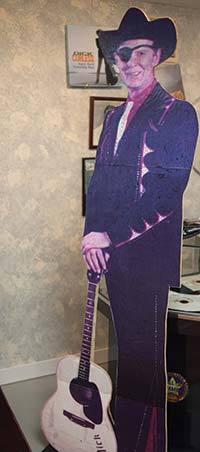 Explore these precious souvenirs of Maine’s country heyday:
Explore these precious souvenirs of Maine’s country heyday:
- a life-size cardboard cutout of Dick Curless, one of the first inductees
- the original 45rpm recording of “A Tombstone Every Mile,” plus Dick’s size 13 patent leather boots
- Georgia Mae’s Vega guitar, with her name inlaid in mother-of-pearl
- the only existing 78rpm copy of “Mountain Rangers” by Mellie Dunham and his Orchestra, from Norway, Maine
- costumes from Bluegrass artists the Frenches of Rainbow Valley Folk
- a righteous banjo built by Bob French named “Monstertone”
- one of Betty Cody’s beautiful handmade costumes
- artifacts from Hal “Lone Pine’ Breau, and sons Denny Breau and Lenny Breau
Multimedia
Visiting the Listening Room, with LP/CD/DVD/video capability, is a great way to explore Maine country, on purpose or by accident.
“Every one of these people had a tremendous following.”
For instance, maybe you already know about Rusty Rogers, one of the fastest yodelers in the business. Or maybe you get curious about Rusty when Slim mentions that he was also a wrestler in the 1950s.
Don’t you want to hear him yodel?
“If people want to hear Rusty Rogers yodel, we can play it for them.” Slim points to a shelf covered with 45 episodes of Rusty’s Bravo Channel series, “A Tribute to the American Cowboy.”
Watch any episode of the local “Spotlights” TV series, shot in Farmington, hosted by Clarendon “Bing” Crosby.
Listen to CDs made from 45s and 78s, featuring mainstays of country Fred Pike, boss of Kennebec Valley Boys, and Tim Farrell, fabled fiddler. You can also hear a copy of Mellie Dunham’s original record, recorded before it cracked. The Hall of Fame also owns many of Dick Curless’ albums on LP, and both box sets, ”Hard Traveling Man” and “A Tombstone Every Mile.”
Country Culture
Of course, the Hall of Fame collection reflects an entire culture thriving around country music – radio stations, clubs, dances, and TV shows.
“Maine is a great contributor to the culture of American country music,” boasts Andrews. “The first coast-to-coast country music radio show originated on WABI in Bangor, and reached from Maine to California.” That was the old Lone Pine Mountaineer show, hosted by Hal Lone Pine, which started in late 1930s.
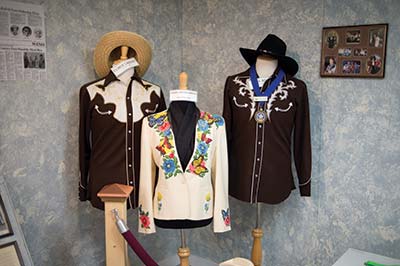 Lone Pine rode a craze begun in the 1930s with a National Barn Dance radio show broadcast from WLS in Chicago. In the1940s, the Wheeling Jamboree, broadcast on Saturdays, went to a 24-hour country music broadcast, all before the Grand Old Opry began. Locally, there was a Monday night talent show on WCOU Lewiston, broadcasting from New Auburn. Ken McKenzie ran a show on WGAN from Portland for decades.
Lone Pine rode a craze begun in the 1930s with a National Barn Dance radio show broadcast from WLS in Chicago. In the1940s, the Wheeling Jamboree, broadcast on Saturdays, went to a 24-hour country music broadcast, all before the Grand Old Opry began. Locally, there was a Monday night talent show on WCOU Lewiston, broadcasting from New Auburn. Ken McKenzie ran a show on WGAN from Portland for decades.
Slim recalls, “Bottle clubs playing country music became popular in the 1960s and 70s. The golden years were the 70s-80s, with the Nashville sound and amplification.” In 1976, Slim and Barry Deane produced the State of Maine country Music Awards, which attracted 800+ people to the Eastland Hotel in Portland. The success of this event led to the Maine Country Music Awards.
Real Country
“There’s nothing wrong with modern country, but don’t call it
country,” Slim asks. “Country is the original soul music brought here by British, Irish, and Scotch people from the British Isles. Those tunes go back hundreds of years.”
“Real country music better tell a story,” Slim admonishes, “and it may bring tears to your eyes.” Indeed, there’s a lot of hard times in a country song. “That’s why ‘D-I-V-O-R-C-E’ became a big hit,” citing Tammy Wynette’s 1968 song.
After all, the great songwriter Harlan Howard once quipped, “All you need to write a country song is three chords and the truth.”
Bluegrass too
Are “newgrass” groups getting it right? “Yes,” Slim affirms, “but they’re much more sophisticated. In the old days, big bluegrass bands played 3-chord songs on a 5-string banjo, mandolin, stand-up bass or guitar. But many never progressed beyond a few chords.”
Slim recognizes today’s bluegrass revival, featuring the likes of Mumford and Sons, the Avett Brothers or Old Crow Medicine Show, have greatly evolved since then. “These new ones are accomplished musicians,” he marvels. By the way, Conway Twitty was born Harold Jenkins. You’d change it, too!
CHECK THIS OUT:
Maine Public “Out and About” 10-minute video
Want a Tour?
To set up a tour, call Slim Andrews: 207-795-1119
Located in the Silver Spur: 272 Lewiston Road, Mechanic Falls, ME 04256
Toby hails from the bustling New York City world of P.R., promoting live events like pay-per-view boxing, and publishing album reviews in Creem and Audio magazines. ---
In LA, she coordinates events for First Universalist Church of Auburn, hosting the monthly Pleasant Note Open Mic, and staging their annual “Vagina Monologues” benefit against domestic violence.

